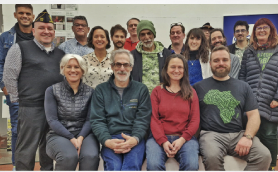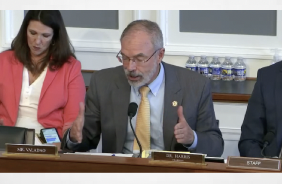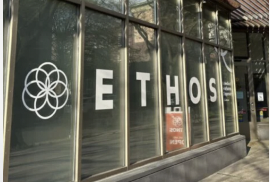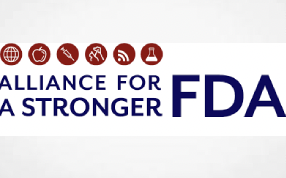As the saying about real estate goes, it’s all about “location, location, location.” The same rule holds true and carries substantial weight when determining where to locate your business in the competitive New Jersey cannabis licensing process – both for medical, and as anticipated to continue in the adult use cannabis program. As a result, a common question we as practitioners are asked is “what towns should I be looking in?” So why does location matter in the cannabis licensing process in New Jersey, and, most importantly, where should you be looking?

In terms of why location matters, the short answer is that location is always taken into account during New Jersey’s competitive licensing process. Starting with the medical program, it is important to remember that by Statute the state’s medical cannabis program (and where a licensee is sited) is broken down by region. The Northern Region includes “the Counties of Bergen, Essex, Hudson, Morris, Passaic, Sussex and Warren.” The Central Region includes “the counties of Hunterdon, Middlesex, Mercer, Monmouth, Ocean, Somerset, and Union.” The Southern Region includes “the counties of Atlantic, Burlington, Camden, Cape May, Cumberland, Gloucester, and Salem.”
But why does that matter? Well, for starters, each of the last two requests for applications (“RFAs”) issued by the New Jersey Department of Health (“DOH”) have limited the number of licenses that an applicant can win, the number of applications that may be submitted, as well as the number of license types that may be awarded within an individual region. For instance, as part of the 2018 RFA, where the only licenses available were vertically integrated, applicants were permitted to file only one application per applicant per region, while also requiring the applicant to note (all things being equal) what region they would prefer to be located in. This created the interesting outcome wherein the highest scoring applicants in all three (3) regions often overlapped. Given the regional preferences identified by the entities within their applications, the six (6) winners were distributed accordingly.
This resulted in a change to the application process as part of the 2019 RFA, wherein those seeking vertically integrated licenses were permitted to submit only one (1) application and, in doing so, select only one (1) region to be apply in. This resulted in forcing applicants to think critically about not only where they wanted to site and locate, but also the strategic impediments associated with that decision. For instance, applicants had to ask themselves, who is the competition seeking to apply in each selected region? Would more applicants be applying in the North, Central, or South, and, in turn, which region gives me the best competitive advantage? Where am I most likely to obtain local municipal approval in a truncated application timeline? All of these questions, and more, made the strategic decision on site selection all the more important as part of the 2019 RFA.
The other interesting change to the 2019 RFA that impacted location was the implementation of new stand-alone permits for dispensary and cultivation (as the State slowly moves away from vertically integrated only licenses). In total, twenty-four (24) licenses were solicited as part of the 2019 RFA, consisting of four (4) vertically integrated licenses (with a mandate that at least one (1) vertical be sited in each of the three (3) regions), five (5) cultivation permits (with two (2) to be cited in both the North and Central, and one (1) in the South), and fifteen (15) dispensary permits (split evenly with five (5) per region).
The 2019 RFA made clear that patient need and access was paramount in calculating license awards. For instance, for the fourth (4) free-floating vertical license, the DOH identified that the Region where it would be located was to be “determined during award process based on overall score and patient need at the time of award.” Similarly, the application itself had specifically asked for an “[e]xplanation of how the proposed dispensary location expands access to patients and caregivers.” Indeed, in determining site suitability for the purposes of applications, the DOH takes into account (which will continue as the program transitions to the Cannabis Regulatory Commission (“CRC”)) existing operators, existing product lines offered by those operators, and a geographic analysis of the patient population. Armed with that information, the DOH utilizes a proprietary algorithm to assess how the applicant’s proposed site increases patient access and reduces overall drive time. Understanding New Jersey’s network of roadways and highways, the distribution of patient populations, and the local political and social atmospheres of New Jersey are pivotal for understanding where best to locate.
Though the adult use enabling legislation has yet to be finalized, the CRC will similarly be tasked with ensuring that there are enough licensed facilities state-wide by taking into account a formula involving geographic population diversity and the distribution of existing facilities, among other factors. Similarly, certain license classes envisioned under the adult use program have geographic limitations built into their structure. Take for instance microbusinesses, where 51% of the owners, directors, officers, or employees of the business must be residents of the municipality where the business is located.
So, what towns should I be looking in? The short answer is that New Jersey is one state with 565 different personalities. Moreover, the vast majority of towns have still yet to publicly state their position on whether they will permit cannabis businesses, let alone where in the individual municipality it will be permitted. Entrepreneurs will unfortunately oftentimes start their search with the limited numbers of municipalities that have publicly spoken on the issue, i.e., Phillipsburg, Paterson, Secaucus, Montclair, Elizabeth, Union, Woodbridge, Eatontown, Atlantic City, Egg Harbor, Vineland, Bellmawr, Ewing, and Cranbury. The problem, for the reasons discussed above, is that the DOH has already sited facilities there, and thus, any applicant will instantaneously be up against the argument as to how a site expands patient access when patients already have access within that municipality. Other municipalities, such as Newark, permit cannabis businesses, but only within specified districts, and, depending on the type of license, only as a conditional use.
The preceding is a longwinded way of saying that a town’s public receptiveness to cannabis must not be the only inquiry considered when determining where to locate your cannabis business – let alone in determining how that site will aid the applicant in winning a competitive license. Moreover, and as prior and current drafts of adult-use legislation have made clear, municipalities will have to pass new ordinances on the permissibility of adult use cannabis facilities, regardless of whether they have previously passed ordinances addressing the topic. The analysis on what towns to locate in must take into account larger and greater issues than simply just what towns are receptive to it – and need to be assessed holistically in connection with the overall goals, objectives, and strategy of the applicant.
For further information on how to strategize these goals and objectives, please feel free to contact Michael C. McQueeny, Erica Rice, Kevin Conroy, Jesse Alderman, or any of Foley Hoag’s experienced cannabis attorneys.

















